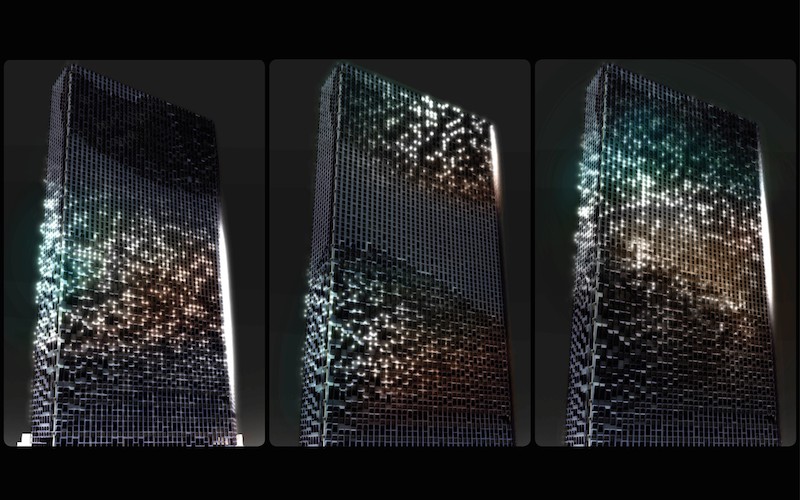Brand Forward Architecture
Posted June 10, 2014

It is refreshing to see a large corporation doing good by doing well. That is the case with Hanwha’s redesign of its Seoul headquarters. Hanwha is one of the world’s largest solar panel manufacturers. To harness the power of their brand, they will cover the building with a facade of solar panels and LEDs. The new facade is designed by UNStudio to be affixed to the existing facade, providing shade, energy creation, and a lighting display that calls attention to the building’s location and use.
There will be a total of three hundred solar panels on the sunniest parts of the building, harnessing the power of the sun. Other, strategically placed panels, will act as shades to the interior. The cost saving estimate is upwards of a million kilowatt hours of electricity per year. An exciting element of the design is the media architecture component. The facade will be illuminated at night by LED pixels programmed to reflect different parts of the building and the activity within. The pixel display takes its design cues from nature, data processing, and energy forms. It is all designed to extend the reach of the Hanwha brand and position the company as a leader in innovative energy resources.
Putting the brand to use in such a dynamic way is a great example of how energy responsible media architecture can tell a story. Enlivening the building corresponds to the mission of the company, the values it wants to portray, and the capacity of its product to change the face of an urban area. The large building says more than other company statements can accomplish.
ESI is a leader in turning unused and under-engaging spaces into technology-driven immersive experiences. We have worked with developers and brands to transform interior spaces into working, immersive areas that create new experiences and stories. 330 Hudson, in New York, is one such project. The LEED Gold building’s lobby was refreshed with 9 LED displays, each 9 feet in length, that wrap the space in bands of lighting. Custom content and generative data display local imagery and information. The highlight of the data is the energy usage display that shows visitors and tenants the energy consumption and savings of the building over time. This will produce more engaged, educated tenants.
Putting a brand’s best step forward ushers in new levels of innovation. Whether it be the large facade of a building in Seoul, or a lobby refresh in Manhattan, technology-driven experiences are paving the way for new perceptions of our built environment. With new perceptions come change and change is what the future needs.


Join The Conversation